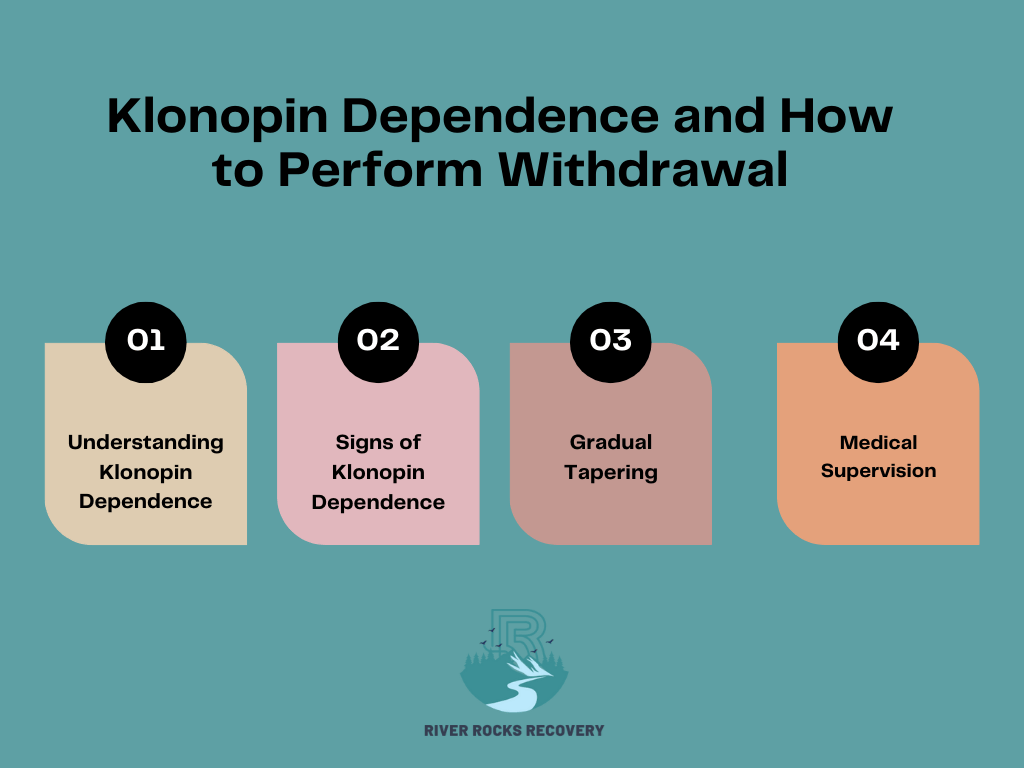Are you looking for ways to perform the Klonopin withdrawal process? If yes, so you have landed on the right page. We know that Klonopin (clonazepam) medicine is frequently used to treat seizures, anxiety, and panic disorders. Although it might provide very good relief in the short term.
However, prolonged usage can cause physical dependence, which makes withdrawal challenging and even deadly. To ensure safety and success, navigating Klonopin withdrawal calls for meticulous planning, expert guidance, and a step-by-step methodology.
If you’re serious about the Klonopin withdrawal process, learn how to effectively manage the different stages of Klonopin withdrawal by reading this article. So, why wait? Let’s jump in!
What does Klonopin Dependence mean and how to perform withdrawal?
Klonopin works by enhancing the effects of GABA, a neurotransmitter that calms brain activity. Dependency develops when the brain gets used to the drug’s presence over time. The brain may react with severe withdrawal symptoms if you abruptly stop taking Klonopin or cut back on dosage too soon. These symptoms could include, anxiety, irritability, muscle pain, seizures, and insomnia.
Please note, that there can be physical and emotional challenges associated with Klonopin withdrawal, so it’s important to follow a systematic strategy.

Step-by-Step Guide to Perform Withdrawal Process
Step 1: Consult a Healthcare Professional
The first step in navigating Klonopin withdrawal is to consult a healthcare professional. Stopping Klonopin abruptly, also known as “going cold turkey,” can be dangerous, especially for those who have been using the drug for an extended period. A medical professional can help you develop a tapering schedule, which involves gradually reducing your dosage over time to minimize withdrawal symptoms.
A tapering process typically extends over several weeks or months, depending on the dosage and duration of use. Your healthcare provider may also suggest additional medications to manage withdrawal symptoms and prevent complications such as seizures.
Step 2: Create a Supportive Environment
Having a strong support network is crucial when discontinuing Klonopin, as the process may take some time. Be in the company of loved ones, close friends, or a support group who can relate to the process and provide encouragement. Share your withdrawal strategy with your closest friends and relatives. Their assistance can be quite helpful, particularly if you’re struggling with worry, mood swings, or other emotional difficulties.
Withdrawing from Klonopin is both physically and emotionally challenging, making a strong support system essential. Reach out to trusted friends, family members, or a support group to provide encouragement and accountability during the withdrawal process. You may also want to consider individual counseling or mental health therapy to help you manage the mental health symptoms that arise during withdrawal, such as anxiety, depression, or panic attacks.
Step 3: Prioritize a Healthy Lifestyle
Maintaining a healthy lifestyle is crucial during Klonopin withdrawal, as it can help alleviate some of the physical and mental symptoms you may experience. Focus on the following:
- Hydration: Staying hydrated can help flush toxins from your system and reduce headaches and dizziness associated with withdrawal.
- Balanced Diet: Eating a nutritious diet rich in fruits, vegetables, lean proteins, and whole grains can boost your energy levels and support your body during the withdrawal process.
- Exercise: Regular physical activity, even light exercises like walking or yoga, can help improve your mood, reduce anxiety, and promote better sleep.
Step 4: Manage Anxiety and Insomnia
One of the most common symptoms of Klonopin withdrawal is a resurgence of anxiety and difficulty sleeping. Managing these symptoms can be challenging, but it is possible with the right tools and strategies:
- Relaxation Techniques: Incorporate relaxation practices like deep breathing, meditation, or progressive muscle relaxation to calm your mind and body.
- Cognitive Behavioral Therapy (CBT): This form of therapy can help you change the negative thought patterns contributing to anxiety and improve your ability to manage stress without relying on medication.
- Sleep Hygiene: Establish a bedtime routine that promotes relaxation, such as avoiding screens before bed, keeping your room dark and quiet, and practicing calming activities like reading or listening to soothing music.
Step 5: Stay Patient with the Process
Klonopin withdrawal is a gradual process that can take time, especially for individuals who have been on the medication for an extended period. It’s important to remain patient and avoid comparing your progress to others. Everyone’s withdrawal experience is unique, and while some may feel better in a few weeks, others may take months to fully recover.
Stay in regular communication with your healthcare provider throughout the process, and report any new or worsening symptoms. This ensures that your tapering schedule can be adjusted if needed to make the withdrawal experience as manageable as possible.
Step 6: Explore Holistic and Alternative Therapies
In addition to traditional medical approaches, some individuals find relief from withdrawal symptoms through holistic and alternative therapies. While these methods should not replace professional medical treatment, they can complement your withdrawal plan. Some options include:
- Acupuncture: Acupuncture can help reduce anxiety, improve sleep, and alleviate physical discomfort during withdrawal.
- Herbal Supplements: Supplements like valerian root, passionflower, and magnesium may have calming effects that ease anxiety and muscle tension, but always consult your doctor before taking new supplements.
- Massage Therapy: Therapeutic massage can help reduce muscle tension, improve circulation, and promote relaxation.
Step 7: Plan for Long-Term Recovery
Once you have successfully navigated the withdrawal process, it’s essential to focus on long-term recovery. This includes addressing the root causes that led to Klonopin use in the first place. Whether you were using Klonopin for anxiety, panic disorders, or another condition, continued therapy and support are crucial to preventing relapse.
Consider the following for long-term recovery:
- Ongoing Therapy: Regular therapy sessions can help you manage anxiety or other underlying issues without the use of benzodiazepines.
- Support Groups: Joining a support group for individuals recovering from benzodiazepine dependence can provide continued encouragement and accountability.
- Healthy Coping Mechanisms: Work on developing healthy coping mechanisms, such as mindfulness, stress management techniques, and regular physical activity, to maintain emotional balance and mental health.
Seeking Professional Medical Support? Call River Rocks Recovery!
Withdrawing from Klonopin is a complex and gradual process but River Rocks Recovery, Ohio Addiction Treatment Center offers professional guidance, careful support, a strong support network, and a structured tapering plan, so you can start your drug-free life.
At River Rocks Recovery, we’re dedicated to giving you the tools, support, and hope you need to overcome addiction through our evidence-based addiction therapy programs. Our treatment plans take into account the special requirements of those who are addicted. Call us today at: (888) 905-6281.
FAQs: How to Navigate the Klonopin Withdrawal Process
Why can withdrawing from Klonopin be difficult?
Klonopin is a habit-forming medication, and abruptly stopping it can lead to severe withdrawal symptoms. This is why it’s important to taper off Klonopin gradually under medical supervision.
What are the common symptoms of Klonopin withdrawal?
Klonopin withdrawal symptoms can vary from person to person, but common symptoms include:
- Anxiety
- Insomnia
- Tremors
- Seizures
- Sweating
- Nausea
- Vomiting
- Muscle cramps
- Difficulty concentrating
How long does Klonopin withdrawal typically last?
Klonopin withdrawal symptoms can last for several weeks or even months. The duration of withdrawal depends on factors such as the dose you were taking and how long you were taking it.
When should I seek medical help for Klonopin withdrawal?
If you are experiencing severe withdrawal symptoms, such as seizures or hallucinations, it’s important to seek medical attention immediately.
Can a doctor prescribe medication to help manage Klonopin withdrawal symptoms?
In some cases, a doctor may prescribe medication to help manage Klonopin withdrawal symptoms. This can be especially helpful for individuals who are at high risk for severe withdrawal.




























